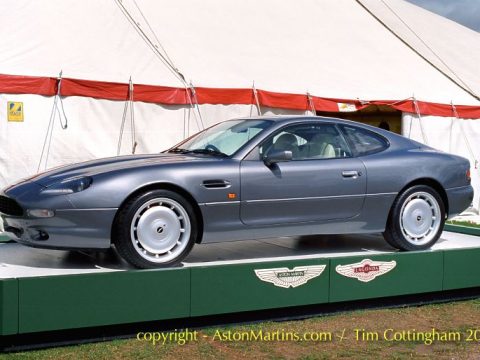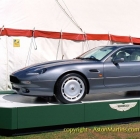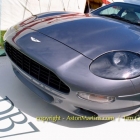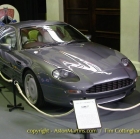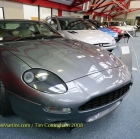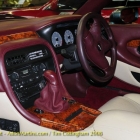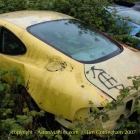What was sure was the Newport Pagnell site was too small to be developed and a new factory was needed. It wasn’t until the sad departure of Victor Gauntlett from AML in October 1991 and with Walter Hayes at the helm, the car that was eventually to become the DB7 began development. Initially the car was known internally as Project NPX (Newport Pagnell eXperimental) but gained the DB7 moniker following the agreement of Sir David Brown. The TWR (Tom Walkinshaw Racing) Group was given the responsibility for design, engineering, development, certification and homologation of Project NPX. TWR already had with a long history with the Jaguar marque, especially the XJ-S, a car very closely related to the DB7.
The completed DB7 was finally displayed to the eager public at the Geneva Salon in March 1993, although deliveries didn’t start until September 1994. Initially at least, the press tried to focus on it’s Jaguar XJ-S origins (although it owes as much to the dead F-type XJ41 and 42 project), but now no one can be in any doubt that the DB7 is all Aston Martin. The DB7 will always be greater than the sum of it’s parts, and it has in time, become a quintessential Aston Martin.
The Jaguar derived and TWR developed 3239cc six cylinder powerplant was augmented with an Eaton supercharger, sufficient to produce 335bhp. This allowed the DB7 a claimed 161mph top speed with acceleration to 60mph in just 5.7 seconds. To many, the Ian Callum designed DB7 is the most beautiful car in the world. In an business sense, it is the car that saved AML and became was the most successful Aston Martin by the time production ended in 2003.
The first images are of the important pre-production prototype DB7 taken outside the AMOC marquee at Coys Historic Festival, Silverstone, 1993, soon after it’s appearance on the AML stand at the Geneva Salon. The interior of Oxblood and Parchment leather perfectly complements the BMW metallic grey paintwork. For a while, the car was on display at the Museum of Road Transport in Coventry before it was transferred into the care of the Aston Martin Heritage Trust. The car actually has no working engine or gearbox.
Also below there are some pictures that were taken of the DB7 i6 prototypes that were used during crash testing. These were in store at the back of the Newport Pagnell factory up until around 2005 when they were removed for destruction. I took these pictures when visiting the Bonhams auctions in the early years of the new millenium.



